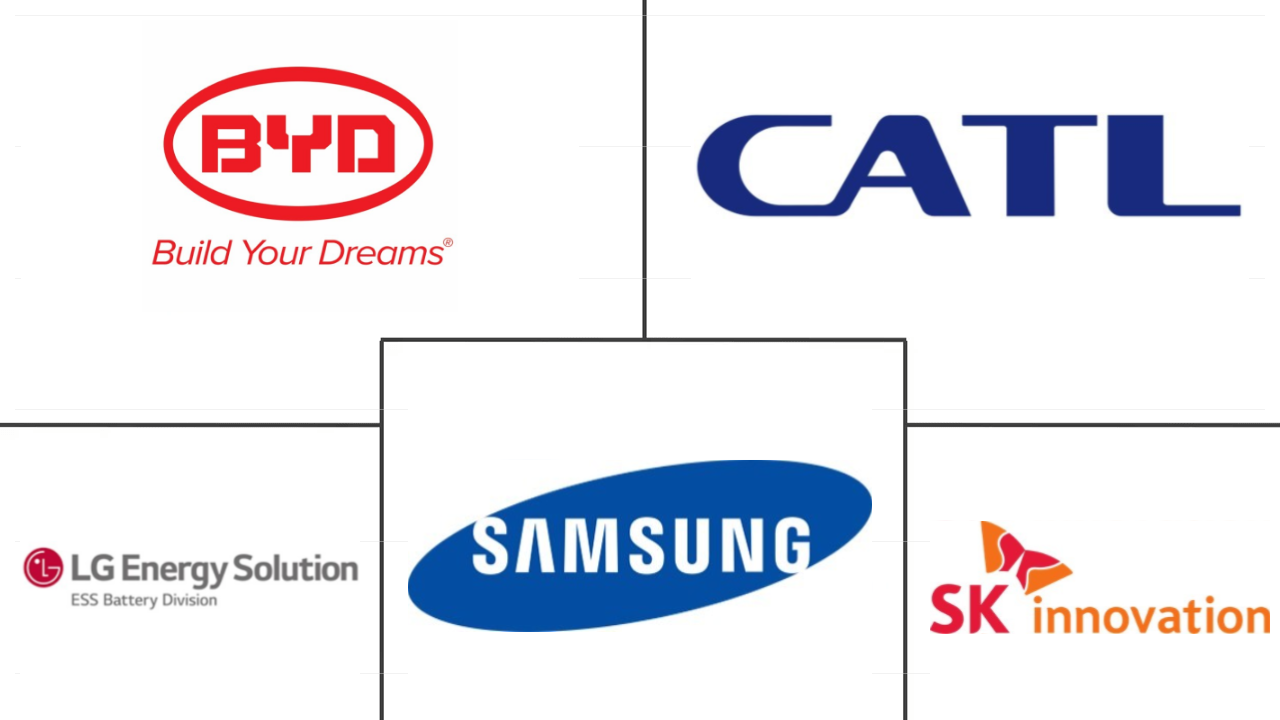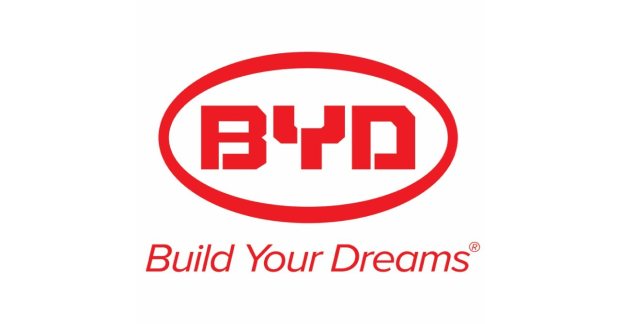Market Size of uk electric bus battery pack Industry
| Icons | Lable | Value |
|---|---|---|
|
|
Study Period | 2017 - 2029 |
|
|
Market Size (2024) | USD 5.78 Million |
|
|
Market Size (2029) | USD 10.06 Million |
|
|
Largest Share by Propulsion Type | BEV |
|
|
CAGR (2024 - 2029) | 11.72 % |
|
|
Fastest Growing by Propulsion Type | BEV |
|
|
Market Concentration | High |
Major Players |
||

|
||
|
*Disclaimer: Major Players sorted in no particular order |
UK Electric Bus Battery Pack Market Analysis
The UK Electric Bus Battery Pack Market size is estimated at 5.78 million USD in 2024, and is expected to reach 10.06 million USD by 2029, growing at a CAGR of 11.72% during the forecast period (2024-2029).
5.78 Million
Market Size in 2024 (USD)
10.06 Million
Market Size in 2029 (USD)
-21.35 %
CAGR (2018-2023)
11.72 %
CAGR (2024-2029)
Largest Segment by Propulsion Type
100 %
value share, BEV, 2023
UK's electric bus market is witnessing a significant shift towards BEV which offer zero-emission transportation and improving air quality in urban areas.
Largest Segment by Battery Chemistry
62.52 %
value share, NMC, 2023
NMC batteries dominate the UK electric bus battery pack market due to cost-effectiveness, thermal safety, high energy density, and long cycle life.
Largest Segment by Battery Form
57.42 %
value share, Prismatic, 2023
Prismatic battery form types gain traction in the UK electric bus battery pack market, offering efficient space utilization and improved bus range and efficiency.
Leading Market Player
22.40 %
market share, BYD Company Ltd., 2022

BYD's electric buses have gained popularity for their reliability, range, and other features. It is used in a variety of electric buses such as BYD K9 and the BYD E6.
Largest Segment by Capacity
71.63 %
value share, 40 kWh to 80 kWh, 2023
This range gives adequate power for long-distance operations and drives the adoption of sustainable public transport options in the UK electric bus battery pack market.
Lowering costs and government support fueling significant increase in battery electric bus deployment across the United Kingdom
- The adoption of electric buses has grown significantly in the United Kingdom as the country aims to reduce its carbon footprint and meet its climate targets. The adoption of electric buses has been driven by various factors, including the need to reduce emissions in cities and the availability of government funding. The adoption of BEBs in the country is driven by government incentives and a commitment to reducing emissions in urban areas. In 2021, 1,259 electric buses were sold in the country, with electric buses accounting for 40% of all new bus registrations.
- According to BloombergNEF, the energy density of electric bus batteries is expected to increase from around 200 Wh/kg in 2021 to 350-400 Wh/kg by 2030. The range of electric buses is determined by battery size, weight, and other factors. In the United Kingdom, the average range for electric buses is between 180 and 350 km on a single charge. However, the upfront cost of electric buses in the country is higher than that of diesel buses. This cost differential is expected to decrease as production volumes increase and battery technology improves. According to Transport for London, the average cost of an electric bus in 2021 is around EUR 400,000 (USD 4,27,582) compared to around EUR 200,000 (USD 2,13,791) for a diesel bus.
- According to a report by Bloomberg New Energy Finance, the total cost of ownership of an electric bus is expected to be lower than that of a diesel bus by 2025, even without government subsidies. Government investment in green infrastructure, falling costs of electric vehicle technology, and growing awareness of the benefits of electric buses are expected to result in a significant increase in the number of electric buses on UK roads in the coming years.
UK Electric Bus Battery Pack Industry Segmentation
BEV, PHEV are covered as segments by Propulsion Type. LFP, NCA, NCM, NMC, Others are covered as segments by Battery Chemistry. 15 kWh to 40 kWh, 40 kWh to 80 kWh, Above 80 kWh, Less than 15 kWh are covered as segments by Capacity. Cylindrical, Pouch, Prismatic are covered as segments by Battery Form. Laser, Wire are covered as segments by Method. Anode, Cathode, Electrolyte, Separator are covered as segments by Component. Cobalt, Lithium, Manganese, Natural Graphite, Nickel are covered as segments by Material Type.
- The adoption of electric buses has grown significantly in the United Kingdom as the country aims to reduce its carbon footprint and meet its climate targets. The adoption of electric buses has been driven by various factors, including the need to reduce emissions in cities and the availability of government funding. The adoption of BEBs in the country is driven by government incentives and a commitment to reducing emissions in urban areas. In 2021, 1,259 electric buses were sold in the country, with electric buses accounting for 40% of all new bus registrations.
- According to BloombergNEF, the energy density of electric bus batteries is expected to increase from around 200 Wh/kg in 2021 to 350-400 Wh/kg by 2030. The range of electric buses is determined by battery size, weight, and other factors. In the United Kingdom, the average range for electric buses is between 180 and 350 km on a single charge. However, the upfront cost of electric buses in the country is higher than that of diesel buses. This cost differential is expected to decrease as production volumes increase and battery technology improves. According to Transport for London, the average cost of an electric bus in 2021 is around EUR 400,000 (USD 4,27,582) compared to around EUR 200,000 (USD 2,13,791) for a diesel bus.
- According to a report by Bloomberg New Energy Finance, the total cost of ownership of an electric bus is expected to be lower than that of a diesel bus by 2025, even without government subsidies. Government investment in green infrastructure, falling costs of electric vehicle technology, and growing awareness of the benefits of electric buses are expected to result in a significant increase in the number of electric buses on UK roads in the coming years.
| Propulsion Type | |
| BEV | |
| PHEV |
| Battery Chemistry | |
| LFP | |
| NCA | |
| NCM | |
| NMC | |
| Others |
| Capacity | |
| 15 kWh to 40 kWh | |
| 40 kWh to 80 kWh | |
| Above 80 kWh | |
| Less than 15 kWh |
| Battery Form | |
| Cylindrical | |
| Pouch | |
| Prismatic |
| Method | |
| Laser | |
| Wire |
| Component | |
| Anode | |
| Cathode | |
| Electrolyte | |
| Separator |
| Material Type | |
| Cobalt | |
| Lithium | |
| Manganese | |
| Natural Graphite | |
| Nickel | |
| Other Materials |
UK Electric Bus Battery Pack Market Size Summary
The UK Electric Bus Battery Pack Market is experiencing significant growth as the country intensifies its efforts to reduce carbon emissions and meet climate objectives. The shift towards electric buses is supported by government incentives and funding, which have been pivotal in increasing the adoption of battery electric buses (BEBs) in urban areas. Despite the higher initial costs compared to diesel buses, the total cost of ownership for electric buses is projected to be lower by 2025, driven by advancements in battery technology and economies of scale. The market is characterized by a competitive landscape, with major players like Toyota Group, Tesla, Kia, Hyundai, and BMW holding substantial market shares. These companies are leveraging their extensive product ranges and strong brand reputations to maintain and expand their positions in the market.
The demand for electric vehicles, including buses, is on the rise in the UK, spurred by growing awareness of the environmental benefits and government support for green infrastructure. The electric vehicle battery pack market is witnessing a surge in demand, with leading models such as the Tesla Model Y, Toyota Vitz (Yaris), and Tesla Model 3 dominating sales. The market is fairly consolidated, with top companies like BYD Company Ltd., Contemporary Amperex Technology Co. Ltd. (CATL), LG Energy Solution Ltd., Samsung SDI Co. Ltd., and SK Innovation Co. Ltd. playing significant roles. Recent developments, such as potential joint ventures and agreements for battery materials, indicate ongoing efforts to enhance battery technology and supply chains, further supporting the growth of the electric bus battery pack market in the UK.
UK Electric Bus Battery Pack Market Size - Table of Contents
-
1. MARKET SEGMENTATION (includes market size in Value in USD and Volume, Forecasts up to 2029 and analysis of growth prospects)
-
1.1 Propulsion Type
-
1.1.1 BEV
-
1.1.2 PHEV
-
-
1.2 Battery Chemistry
-
1.2.1 LFP
-
1.2.2 NCA
-
1.2.3 NCM
-
1.2.4 NMC
-
1.2.5 Others
-
-
1.3 Capacity
-
1.3.1 15 kWh to 40 kWh
-
1.3.2 40 kWh to 80 kWh
-
1.3.3 Above 80 kWh
-
1.3.4 Less than 15 kWh
-
-
1.4 Battery Form
-
1.4.1 Cylindrical
-
1.4.2 Pouch
-
1.4.3 Prismatic
-
-
1.5 Method
-
1.5.1 Laser
-
1.5.2 Wire
-
-
1.6 Component
-
1.6.1 Anode
-
1.6.2 Cathode
-
1.6.3 Electrolyte
-
1.6.4 Separator
-
-
1.7 Material Type
-
1.7.1 Cobalt
-
1.7.2 Lithium
-
1.7.3 Manganese
-
1.7.4 Natural Graphite
-
1.7.5 Nickel
-
1.7.6 Other Materials
-
-
UK Electric Bus Battery Pack Market Size FAQs
How big is the UK Electric Bus Battery Pack Market?
The UK Electric Bus Battery Pack Market size is expected to reach USD 5.78 million in 2024 and grow at a CAGR of 11.72% to reach USD 10.06 million by 2029.
What is the current UK Electric Bus Battery Pack Market size?
In 2024, the UK Electric Bus Battery Pack Market size is expected to reach USD 5.78 million.

